#the deluge 1974
Text
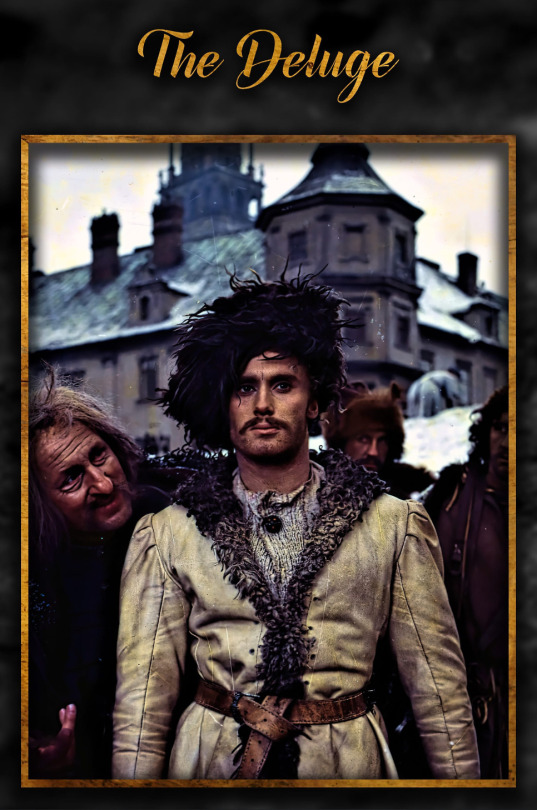
#movies#polls#the deluge#the deluge 1974#the deluge movie#70s movies#jerzy hoffman#daniel olbrychski#małgorzata braunek#tadeusz łomnicki#requested#have you seen this movie poll
64 notes
·
View notes
Text
BOGUSŁAW RADZIWIŁŁ X ANDRZEJ KMICIC ONE SHOT; in polish!!
—————
Bogusław Radziwiłł leżał na trawie bez możliwości podniesienia się. Andrzej Kmicic mocno przyciskał go butem do ziemi, jakby chciał jeszcze bardziej upokorzyć zadufanego w sobie księcia, któremu dodatkowo przykładał szablę do krtani.
Chorąży orszański czuł się w tamtej chwili, jakby miał władzę nad światem. Poczucie kontroli uderzało mu do głowy jak tanie wino. Wystarczył jeden ruch szabli, a mógł pozbawić Radziwiłła życia. Andrzej zachowywał się, jakby chciał uczynić mu śmierć jeszcze gorszą, bardziej męczącą. Chciał słyszeć błagania o litość od tego cholernego zdrajcy, który w tamtej chwili patrzył mu prosto w oczy. Kmicic prychnął pod nosem — Bogusław miał czelność po tym wszystkim jak gdyby nigdy nic, bez żadnego wstydu, spoglądać na niego tak intensywnie.
— Nie zabijaj mnie — wykrztusił z siebie w końcu książę, który prezentował się zupełnie inaczej niż zwykle. Najczęściej mężczyzna wyglądał jak marmurowa rzeźba, wręcz uosobienie Apollina. Zawsze dbał także o swój ubiór, który za każdym razem musiał odznaczać się ekstrawagancją.
W tamtej chwili jednak Bogusław stał się dla Kmicica jedynie żywym dowodem na to, jak pycha może zniszczyć człowieka.
— Proszę, nie zabijaj mnie — powtórzył Radziwiłł, brzmiąc niemal żałośnie. Jego blada twarz była skąpana w promieniach słońca, tym razem jednak została także okraszona karminowymi ranami.
— Nie zasługujesz na nic innego — mruknął Kmicic, nieco mocniej wbijając szablę w gardło Bogusława, jakby chcąc go nastraszyć. Był gotów go zabić. Ba! Pragnął tego za wszystko, co zgotowali mu Radziwiłłowie. Mimo wszystko wiedział, że musi przedłużać ten moment jak najdłużej to możliwe, aby książę umierał w katuszach.
Bogusław przez chwilę milczał. Ciszę między mężczyznami zakłócało jedynie szybkie, głośne i nierówne bicie serca Radziwiłła. Bał się, szczerze się bał, choć nigdy nie przyznałby tego na głos, a na pewno nie przed chorążym orszańskim.
W tamtej chwili dla ich obu czas się zatrzymał. Delikatny wiatr przestał wiać, otoczenie stało się nieistotne. Wszystko stało się nieistotne. Kmicic niemal zapominał nawet o Oleńce, zbyt zatracony w zemście na księciu.
— Tak myślisz? Jednak ludzie mi na świadka, że to właśnie mnie błagałeś o łaskę — wymamrotał Bogusław, starając się zamaskować swój strach ironią.
Kmicic jedynie uśmiechnął się filuternie. Chęć rewanżu wypełniała go — była w jego płucach zamiast tlenu, odurzał się nią jak papierosem. Nienawiść przejęła kontrolę nad chorążym orszańskim, który mimo pozorów zupełnie nad sobą nie panował. Gdyby tylko Radziwiłł znajdował się w bardziej korzystnej dla siebie pozycji, mógłby łatwo przejąć nad Andrzejem kontrolę. Kmicic nie myślał trzeźwo — już dawno upił się żądzą zemsty i upokorzenia swojego przeciwnika.
— Zrobiłem to, by ratować cudze życie. Cenne mi życie — powiedział chorąży, mierząc Radziwiłła pełnym niechęci spojrzeniem. — Najpewniej boli to waćpana, bo za waść nikt nigdy by się tak nie poświęcił.
Słowa te zabolały księcia bardziej niż on sam mógłby się tego spodziewać. Nigdy nie obdarzył nikogo miłością; całą magazynował w sobie. Mimo wszystko te słowa wypowiedziane w tak bezpośredni sposób, w takich emocjach, z taką szczerością w głosie, zadały Radziwiłłowi więcej bólu niż jakakolwiek szabla.
— Milczenie oznacza zgodę — dodał po chwili Kmicic, czerpiąc wielką satysfakcję ze zdezorientowania na twarzy Bogusława. — Spójrz, pierwszy raz zobaczysz, jak ktoś się dla ciebie poświęca. Jak ktoś ze szczerego serca sprawia ci przysługę — wycedził przez zęby.
Andrzej z całych sił wcisnął swą szablę prosto w gardło księcia; nie przestawał ani na chwilę, nawet gdy miał pewność, że Radziwiłł już nie żyje. Szkarłatna krew tryskała na każdą stronę, brudząc przy tym szaty samego chorążego orszańskiego.
— Zakończyłem twój marny żywot. Żywot bez miłości, jedynie ze złudnym szczęściem — powiedział, brzmiąc jak szaleniec. Kmicic odurzał się każda chwilą zemsty, czuł, jak traci kontrolę nad własnym zachowaniem. Nie wiedział już, co tak naprawdę czuje.
Z jednej strony szczerze chciał go zabić — i chciał zadać mu przy tym jak najwięcej bólu. Z drugiej jednak strony, Kmicic naprawdę wariował. Nigdy przedtem po zamordowaniu kogoś nie czuł się jak ostatni szalaniec, potwór pozbawiony skrupułów. Co z tego, że Bogusław był księciem? — przede wszystkim zdradził ojczyznę, nie zasługiwał na to, by darować mu życie.
Mężczyzna miał mętlik w głowie.
— Wiesz, co jest najgorsze? — spytał Andrzej, mimo świadomości, że nikt mu już nie odpowie. — Że ja mógłbym dać ci tę miłość, której od drugiego człowieka nigdy nie doświadczyłeś. Problem w tym, że nawet byś jej nie zechciał — prychnął pogardliwie. — Byłeś na to zbyt dumny.
#andrzej kmicic#bogusław radziwiłł#potop#the deluge#potop 1974#the deluge 1974#polish stuff#one shot#henryk sienkiewicz#trylogia
26 notes
·
View notes
Text
SIDE 1 ROUND 2
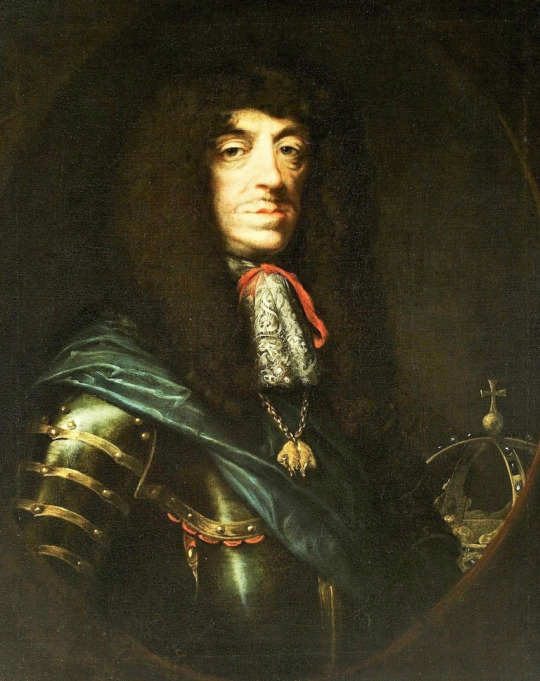
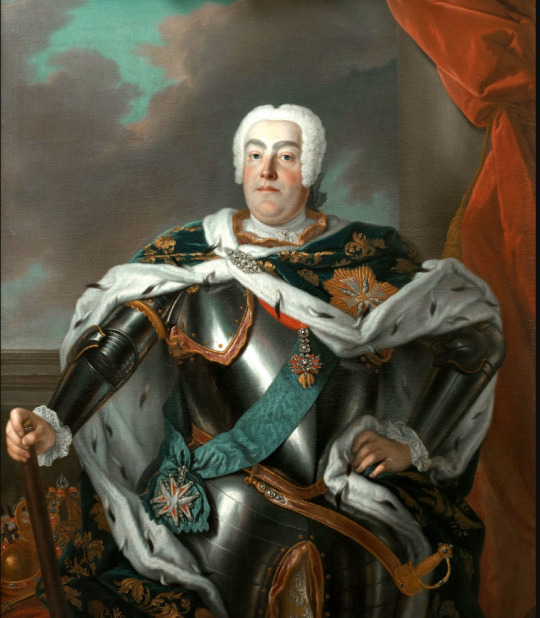
learn more about August's fashion-forward chief advisor here and about the ex-cardinal abdicant's plague-of-egypt-esque reign here
#technically you can also learn about Waza's reign in The Deluge (1974) dir. Jerzy Hoffman#rulers of poland tournament#side 1#round 2#jan kazimierz#august iii sas
36 notes
·
View notes
Text
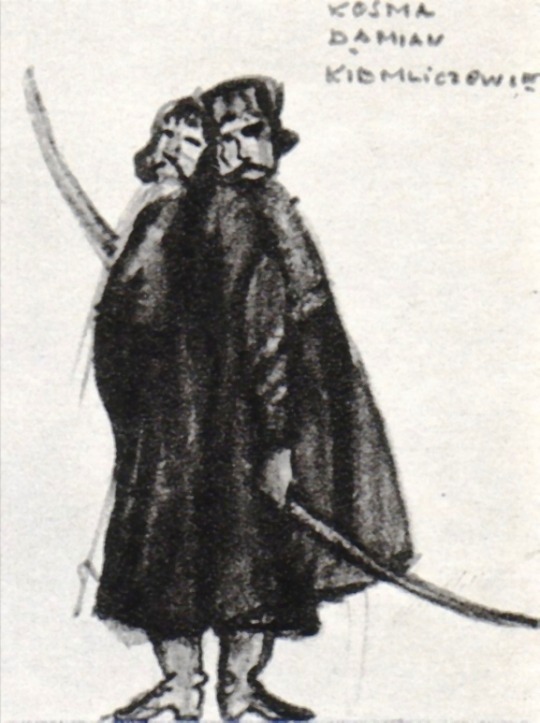
Kiemlicze
Original costume design from the Polish film "Potop" ("Deluge", 1974) for Kiemlicze Brothers, by Jerzy Szeski (1920-1992) & Magdalena Tesławska (1945-2011).
#because we need more kiemlicze here#potop#deluge#trylogia#henryk sienkiewicz#jerzy hoffman#polish literature#polish film#polish film costume design#costume design#film costumes#trylogiarchive#trylogia sensem życia
23 notes
·
View notes
Photo

When Ry Cooder famously made his debut appearance at Glastonbury, playing on the Pyramid stage on a damp day in June 1990, he chose not to be backed by a band but by a second guitarist who came on sporting bright red trousers, and hair and sideburns that were very long, even by rock music standards. The duo perched on stools, surrounded by a dozen guitars, mandolins or bouzoukis, and proceeded to prove that they were both virtuoso players who could sound as thrilling as any amplified band as they switched from the atmospheric Paris, Texas to songs made famous by Woody Guthrie, Lead Belly or Jerry Lee Lewis.
Cooder’s companion, David Lindley, who has died aged 78, was a musicians’ musician. He may never have been as well known as those he played with, but he was one of the most sought-after session players in the US. Best known for his collaborations with Cooder and Jackson Browne, he also recorded with an astonishing list of musicians that included Leonard Cohen, Bob Dylan, James Taylor, Iggy Pop, Linda Ronstadt, Dolly Parton, John Prine, David Crosby, Graham Nash, Ben Harper, Rickie Lee Jones and Bruce Springsteen. They wanted to work with Lindley not just because he was a great musician who could play almost any stringed instrument, from guitar and fiddle to slide guitar and mandolin through to oud and bouzouki, but because he knew how to interpret the mood of a song, adding texture and emotion without ever dominating.
His own musical taste was far more varied than the rock or singer-songwriter styles of the stars for whom he acted as sideman. When leading his own band, El Rayo-X, he was able to branch out and demonstrate his sense of humour as he explored blues, funk and reggae. Like Cooder, he was fascinated by musical styles from around the world, and some of his most original recordings were with musicians from Madagascar, Hawaii, Norway and Jordan.
Born in San Marino, Los Angeles, he was the son of Margaret (nee Wells) and Jack Lindley, a lawyer and music fan. He grew up listening to his father’s eclectic record collection, which included music from the Middle East and Asia, and he learned to play his father’s ukulele, then the banjo. While at La Salle high school in Pasadena he formed a bluegrass band, the Mad Mountain Ramblers, and then the Dry City Scat Band, which played around the Los Angeles folk clubs and at Disneyland. He was still a teenager when he first won the annual Topanga Canyon banjo and fiddle contest, but was asked to stop competing after he had won it five times.
Lindley’s reputation was growing fast, and in 1967 he landed his first major session, playing on Cohen’s debut, Songs of Leonard Cohen. By then he had formed his first electric band, Kaleidoscope, along with Chris Darrow, with whom he had played in the Scat Band. They released their first, wildly experimental album, Side Trips, in 1967, mixing Middle Eastern music with rock, cajun, country and bluegrass, but, though they were praised by Jimmy Page of Led Zeppelin, their unique brand of “psychedelic folk” didn’t sell records. They broke up in 1970, after recording four albums, and Lindley moved to England to work with the singer-guitarist Terry Reid, who had famously turned down Led Zeppelin.
Moving back to the US, Lindley teamed up with Browne, with whom he spent the rest of the 1970s, touring and recording as a key member of his band, playing acoustic and electric guitar, slide guitar and fiddle. He perfectly complemented many of Browne’s best-loved songs, playing lap steel on Running on Empty and fiddle on Before the Deluge. Browne called him “my hero”, and other musicians asked him to play on their records when Browne did not require his services. His recordings during that period included three albums for Ronstadt, including her first No 1 album, the exquisite Heart Like a Wheel (1974), two with Rod Stewart, including his bestselling Atlantic Crossing (1975), along with albums with Crosby & Nash, Taylor, Warren Zevon and Parton.
He first recorded with Cooder on Jazz (1978) and Bop Till You Drop (1979), after which the duo began performing live together, touring in Australia and Japan. A 1979 live radio recording from Osaka was released on CD in 2021. On their tour in 1995 they were joined onstage by Cooder’s son, Joachim, and Lindley’s folksinger daughter, Rosanne, and released the album Cooder/Lindley Family Live at the Vienna Opera House.
After leaving Browne’s band in 1980, Lindley moved from sideman to band leader with El Rayo-X, which he called “more or less a party band”, and in which he matched his own songs along with a bravely varied assortment of old favourites. The band’s self-titled debut set in 1981 included a glorious, furious treatment of KC Douglas’s Mercury Blues, while Win This Record, released the following year, included the Toots and the Maytals song Premature. Mr Dave (1985) included his own reggae composition Alien Invasion, and the band’s final album Very Greasy (1988) continued to demonstrate his fascination with the Caribbean. Produced by Ronstadt, it included Ronstadt adding harmony vocals on Lord Kitchener’s calypso classic Gimme da Ting (on which Lindley played guitar and kora) and a reggae reworking of Zevon’s Werewolves of London.
While running the band, he still managed time to visit London to play alongside Richard Thompson and Rory Gallagher, and revive his love of flamenco with Juan Martin, at a Guitarists Night concert in March 1984. And he continued his session work, including albums for Browne, and for Emmylou Harris, Ronstadt and Parton on Trio (1987). In 1990 he worked with Dylan on Under the Red Sky.
Still keen to expand his musical range, he travelled to Madagascar with the guitarist Henry Kaiser to record the musicians and unique instruments of the vast island off the east coast of Africa. The aim was to present local stars to an international audience, but Lindley and Kaiser joined in several of the sessions. The resulting albums, A World Out of Time, Vols 1 and 2 (1992-93), included Lindley playing slide guitar with the traditional band Tarika Sammy and joining guitarist Rossy on a reworking of I Fought the Law, the Crickets song popularised by the Clash.
Moving on to Hawaii, this time in the company of Cooder, he recorded with the Pahinui Bros (1992) on a set that included a Hawaiian reggae treatment of John Lennon’s Jealous Guy. Further musical travels included recordings in Norway with Kaiser for The Sweet Sunny North (1994). In 1994-95 he also recorded with the Jordanian oud player Hani Naser, and between 2000 and 2004 with the reggae percussionist Wally Ingram. Their third album together, Twango Bango III (2003) included When a Guy Gets Boobs, a comment on the American diet. “I have always liked songwriters like Warren Zevon who could write something goofy and also really serious,” he explained.
In 2006 he was reunited with Browne for a short Spanish tour on which they were backed by a flamenco percussionist. Love Is Strange, a live album recorded on that tour, was released in 2010, when Browne and Lindley toured Europe and the US, and played at Glastonbury, with a set that included Running On Empty and Mercury Blues. In the same year Lindley also worked with Bruce Springsteen on The Promise. His own final solo album, Big Twang, was released in 2007.
Lindley had a wild stage image, thanks to his colourful clothes and long hair, but he never favoured a rock’n’roll lifestyle, and would often retreat to his hotel room to rehearse after a show. He hated being disturbed in the morning by hotel workers, and would imitate a dog, scratching at the door and barking, to keep them away.
He lived in Claremont, California, in a house filled with musical instruments, and was married to Joan Darrow, the sister of his Kaleidoscope colleague Chris Darrow. He is survived by Joan and Rosanne.
🔔 David Lindley, musician, born 21 March 1944; died 3 March 2023
Daily inspiration. Discover more photos at http://justforbooks.tumblr.com
26 notes
·
View notes
Text

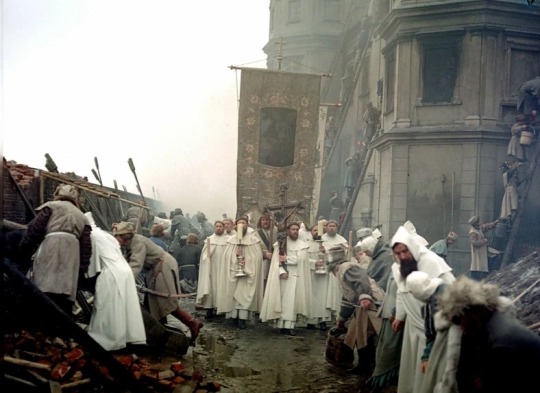
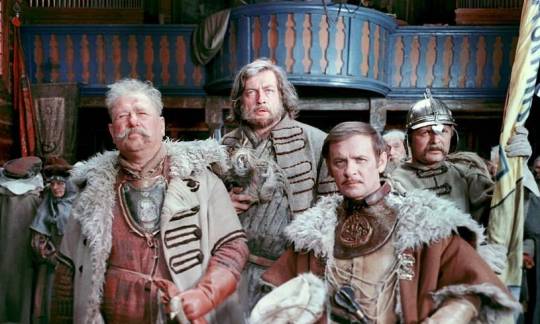

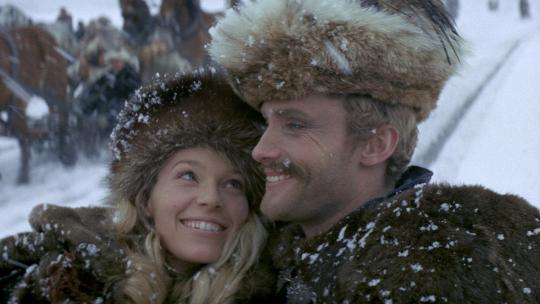

"The Deluge" (1974).
44 notes
·
View notes
Text
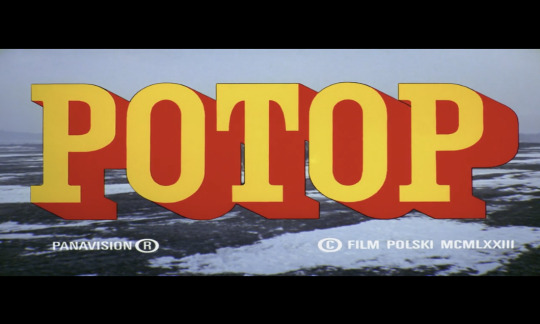
Titlecard for "The Deluge," 1974.
youtube
3 notes
·
View notes
Photo
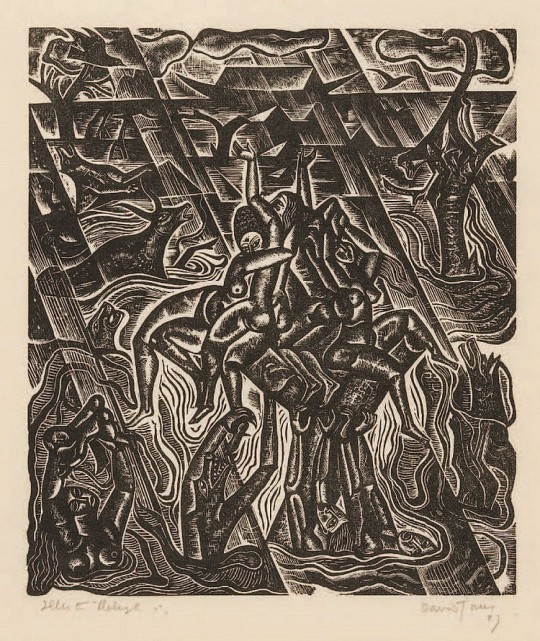
DAVID JONES, C.H. (1895-1974) The Chester Play of the Deluge: Fiveplates wood engravings, 1926-27, comprising four plates on Japan paper,each signed, dated, titled and inscribed in pencil
2 notes
·
View notes
Photo

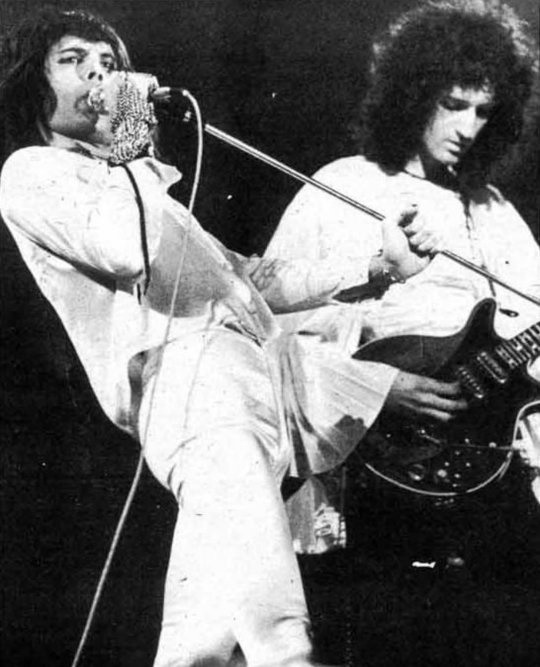


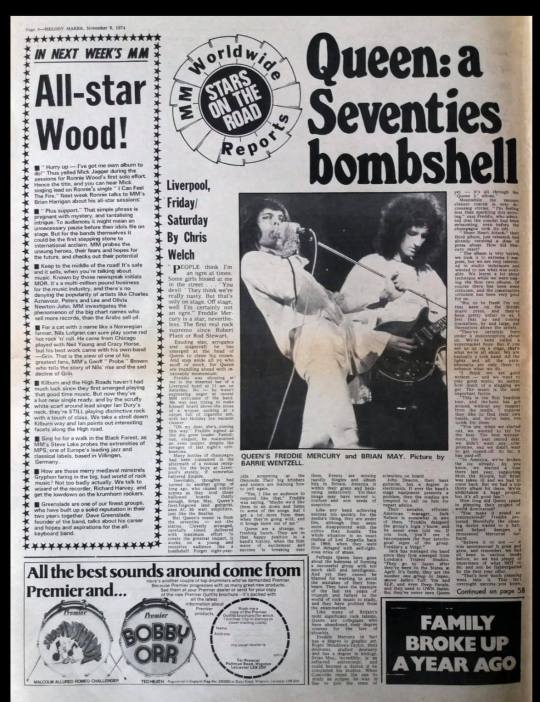

9 November 1974, Melody Maker Published an Interview With Freddie Mercury“A Seventies Bombshell” By Chris Welch “People think I’m an ogre at times. Some girls hissed at me in the street… ‘You devil’ They think we’re really nasty. But that’s only on stage. Off stage, well I’m certainly not an ogre.”Freddie Mercury is a star, nevertheless. The first real rock supremo since Robert Plant or Rod Stewart. Exuding elan, arrogance and stagecraft he has emerged at the head of Queen to claim his crown. And step aside all ye who scoff or mock, for Queen are trundling ahead with inexorable momentum.Freddie was shouting at me in the deserted bar of a Liverpool hotel at 11 am on Saturday. No – he wasn’t expressing anger at recent MM criticism of the band.
He was just trying to make himself heard above the noise of a woman sucking at a carpet full of cigarette ash, with her Holiday Inn vacuum cleaner.“Oh my dear, she’s coming this way.” Freddie sighed as the din grew louder. Fastidious, elegant, he maintained an even temper, despite the ravages of last night’s celebrations. Many bottles of champagne had been consumed in the aftermath of a riotous reception for the boys at Liverpool’s stately, if somewhat battered Empire. Inevitably, thoughts had turned to another group of long ago, who caused similar scenes as they trod those hallowed boards. Oddly enough, Brian May, Queen’s fleet-fingered guitarist, uses AC 30 watt amplifiers, just like the Beatles. But Queen’s music is from the seventies – not the sixties. Cleverly arranged, carefully timed, delivered with maximum effort to create the greatest impact, it works on a young and receptive audience like a bombshell. Forget eight-year-olds screaming at the Osmonds. Their big brothers and sisters are learning how to yell again.“Yes, I like an audience to respond like that,” Freddie was saying. “Maybe we’d like them to sit down and listen to some of the songs, but I get a lot more from them when they’re going wild, and it brings more out of me.”Queen are a strange, refreshing bunch. They are in that happy position in a band’s story, when the first wave of excitement and success is breaking over them. Events are moving rapidly. Singles and album hits in Britain. America is within their grasp and beckoning seductively. Yet their image may have served to confuse and sow seeds of suspicion. Like any band achieving success too quickly for the media’s liking, they are under fire, although they seem more disappointed with the critics than hostile. The whole situation is an exact replica of Led Zeppelin back in 1969, when they were first deluged with self-righteous cries of abuse. Perhaps Queen have gone about the business of forming a successful group with too much skill and intelligence. And yet they cannot be blamed for wanting to avoid the mistakes of their fore-bears. They have the example of the last ten years of triumph and failure in the world of rock music to study, and they have profited from the examination. Like many of Britain’s most significant rock talents, Queen are collegians who have abandoned their degree courses for the lure of showbiz. Freddie Mercury in fact has a degree in graphic art. Roger Meddows Taylor, their drummer, studied dentistry and has a degree in biology. Brian May, incredibly, is an infra-red astronomer, and could become doctor if he completed his studies. When Concorde raced the sun to study an eclipse, he was in line to join the team of scientists on board. John Deacon, their bass guitarist, has a degree in electronics. If ever the band’s stage equipment presents a problem, then the roadies are tempted to call on him for expert advice. Their amiable, efficient American manager, Jack Nelson is somewhat in awe of them. “Freddie designed the group’s logia y’know, and he never told me. If you look, you’ll see it encompasses the four astrological signs of the group. Freddie’s a Virgo.” Jack has managed the band since they first emerged from London’s Trident Studios. “They go to Japan after they’ve been to the States in April. It’s funny, they are the number one group in Japan, above Jethro Tull, Yes and ELP, and even Deep Purple, and they used to OWN Japan. But they’ve never seen Queen yet – it’s all through the ‘Queen 2’ album.” Meanwhile the vacuum cleaner roared in ever decreasing circles.“I’m feeling less than sparkling this morning,” said Freddie, who admitted that the concert had been exhausting, even before the champagne took its toll. ‘Sheer Heart Attack’, their third album, just released, had already received a dose of press abuse. How did Mercury react?“The album is very varied, we took it to extreme I suppose, but we are very interested in studio techniques and wanted to use what was available. We learnt a lot about technique while we were making the first two albums. Of course there has been some criticism, and the constructive criticism has been very good for us. But to be frank I’m not that keen on the British music press, and they’ve been pretty unfair to us. I feel that up and coming journalists, by the large, put themselves above the artists. They’ve certainly been under a misconception about us. We’ve been called a supermarket hype. But if you see us up on a stage, that’s what we’re all about. We are basically a rock band. All the lights and paraphernalia are only there to enhance what we do. I think we’re good writers – and we want to play good music, no matter how much of a slagging we get. The music is the most important factor. This is our first headline tour, and the buzz has got around, without any support from the media. I suppose they like to find their own bands, and we’ve been too quick for them. You see, when we started out, we wanted to try for the best. The best management, the best record deal, we didn’t want any compromise, and we didn’t want to get ripped-off. So far, it has paid off. In America, we’ve broken the ice already. As you know, we started a tour there last year, supporting Mott The Hoople, but Brian was taken ill and we had to come back. But we had a top thirty album hit there. We’ve undertaken a huge project, but it’s all good fun.”How long did Queen spend in planning their project of world domination?“You make it sound so preconceived!” Freddie protested. Mercifully the cleaning device wailed to a halt, and helped dampen a threatened Mercurial outburst.“Believe it or not – it was spontaneous! It grew and grew, and remember, we had all been in various bands before, so we had plenty of experience of what NOT to do, and not be flabbergasted by the first rosy offer. That’s how much planning went into it. This isn’t overnight success you know, we’ve been going for four years! We just got the right people to work for us, and the right company, and it’s taken a long time. And yet we’ve been accused of being a hype, compared to bands we’ve never even heard of, and then finally told that we didn’t even write our own songs. That hurt. Right from the start we have been writing our own songs, and that was the whole point – to come up with some ORIGINAL songs. In this country, to gain respect in a short while seems very difficult, and the papers like to feel they have you in their grasp. Well – we slipped out of their grasp.”However, Freddie is the first to admit that there can be dissent within the group, as well as without.“We tend to work well under pressure. But do we row? Oh my dear, we’re the bitchiest band on earth. You’ll have to spend a couple of days with us. We’re at each other’s THROATS. But if we didn’t disagree, we’d just be yes-men, and we do get the cream in the end.”THE GIG: An atmosphere approaching bedlam is prevalent inside the Empire, long before Queen emit a hint of activity behind the sombre barrier of the safety curtain. Hustler have come and gone, and now the audience are hungry for action. Bad reviews? Supermarket rock? Thousands of Queen’s Liverpool supporters look suspiciously as if they couldn’t care neither jot nor little. They whistle and chant and clap with all the precision of the football terraces. The ancient cry of “Wally!” still heard in northern territories, echoes around the faded gilt decor. Jack Nelson is intrigued by the cry, wonders if Wally are a local group and wants to sign them, until informed Bob Harris already has a stake in the real thing. Mersey accents boom over the PA: “We do apologise for technical hitch, it’s to do with the PA system and we are assured the show will start in two, three or four minutes.” More whistles, as tough-looking lads in white trousers and combat jackets with ELP and Jethro Tull emblazoned on the back, pass beer bottles and conduct the audience with cheeky gestures. It’s all in fun and the only mild aggro comes when the Queen’s entourage from London try to claim their seats near the front. ” #### off!” directs one youth as PR Tony Brainsby pleads for his seat. “All these seats are taken, up to the gentleman there,” says Tony, pointing at me. Ribald laughter from the watching stalls, and repeated cries of “Ooh – Gentleman!”. Grousing, the seat pirates eventually relinquish their hold, with dark mutterings of: “Alright, but we’ll see you outside.” The battle was in vain, for as the party took their seats, the safety curtain went up, and the audience rushed forward. Instantly the house lights went up again and the curtain jerked uncertainly down. A nervous man with face ashen of hue appeared at the side of the stage clad in incongruous evening dress, as if he were the master of ceremonies and this was old time music-hall. “There is no way we are going to start…” he began. “All you have to do is enjoy the show…” But there was a way. Somebody turned a blinding spotlight on the managerial figure, and he retired defeated, as the curtain halted in mid descent and began a jerky upward movement. Within seconds most of the audience were standing up to gaze desperately at the darkened empty stage, and there they were – shadowy figures bounding towards the waiting instruments. The lights blazed, and there was evil Fred, clad all in white, the archetypal demon rock singer, pouting and snarling:“Queen is back. What do you think of that?”A tumultuous roar indicated that the mob were well disposed to the idea. It was difficult to assess the early part of the band’s performance because the fans with that wonderful selfishness of clamorous youth, decided to stand on their seats, their bodies screening both sight and sound. As a non-paying guest, I was not too worried on my account, but felt sorry for the kids at the back who had paid their cash. Retiring to the back of the theatre, and giving up the hard won seats, we watched the scenes of tumult, including a boy on crutches, perhaps unable to see, but desperately waving his steel supports in supplication. The band’s strategy and appeal began to take shape as they tore through such dramatic pieces as “Now I’m Here”, “Ogre Battle”, “Father To Son”, and “White Queen” from the second album. Roger’s drum are the band’s workhorse, punching home the arrangements, and mixing a sophisticated technique with violent attack. Roger says his favourite drummer is John Bonham. Brian is a fervent, emotional guitarist, who is like a Ronno-figure to Freddie, and is obviously a gifted musician. The onstage attention is judiciously divided between them, and when May takes a solo on his guitar, Mercury leaves the stage, only to return in a stunning new costume. Into a medley now, and apart from their slickness, and Freddie’s dynamic presence, the extra power of almost choral vocal harmonies is appreciated, something that few bands with a central lead singer can achieve. The camper aspects of Queen are displayed in “Leroy Brown”, a gay, dixie-land tune that Freddie insists is inspired by the Pointers Sisters. Then their first hit “Seven Seas Of Rhye” and a lunatic tempo on “Stone Cold Crazy”, “Liar”, and the finale from “Lap Of The Gods”. Dry ice began to envelope the stage, and as red light glowed through the fog, group and audience took on an eerie aspect, like a scene from some Wagnerian forste, as arms waved like young saplings in a night breeze. Then an explosion of white light, and two red flares burn over a deserted stage. Queen have gone, signalling a desperate roar of “MORE!” After some three minutes the band responded to the insistent demand: “We Want Queen”, Wally having been long forgotten. Into “Big Spender”, with its slow, measured pace and finally “Modern Times Rock ‘n’ Roll”, an apt anthem for a group of our times. The band are still developing, and their mixture of heavy rock and glamorous display might seem curious. But as Queen makes its royal tour of the land, the effect on their subjects is to inspire unmitigated loyalty. And amidst predictions of gloom for the British rock scene, it is a healthy and encouraging spectacleThe first beautiful photo of Queen is from the ‘Sheer Heart Attack' photoshoot and was taken by the brilliant Mick Rock The other two photos were taken during Queen’s concert at Empire Theatre in Liverpool 1 November 1974
6 notes
·
View notes
Text
After publishing White House tapes, the Tribune told Nixon his time was up


On April 30, 1974, the Tribune’s jet landed at Meigs Field on the lakefront instead of Midway Airport on the Southwest Side so its cargo could be delivered to Tribune Tower more quickly.
The Tribune was going for a big scoop.
The airplane carried transcripts of secret tape recordings of White House conversations that President Richard M. Nixon had announced would be released on May 1.
Those tapes proved to be Nixon’s undoing.
The Golden Rule of public relations is if you have something to hide, don’t.
Get it out there before an opponent does.
Congress was considering articles of impeachment and had subpoenaed the tapes.
The recordings would prove crucial to the investigation of the Watergate scandal, which began on June 17, 1972, when burglars were caught in the Democratic National Headquarters in Washington, D.C.
One had an address book with a White House phone number.
Immediately after Nixon’s 1974 speech on the pending release of the tapes, the Tribune’s publisher, Stanton Cook, phoned Editor-in-Chief Clayton Kirkpatrick.
“While we were talking, we agreed that the full text would be a fascinating document,” Kirkpatrick recalled. “We decided to find out if we could publish the whole thing quickly.”
He got up on a desk to tell the newsroom staff of the plan.
The logistics were daunting.
The transcript would be released at the Government Printing Office in Washington.
It contained two to three times the words the Tribune published daily.
In an age before computers, setting text into type was laborious, and the project’s gears had to perfectly mesh.
They did.
The plane took off at 5 a.m.
Onboard were a flock of copy editors and the superintendents of the composing room and the engraving department.
The moment the Government Printing Office opened, Frank Starr, the Washington bureau chief, bought two copies of the 50 volumes of transcripts and rushed them to Dulles International Airport.
“We spent five minutes on the ground looking at the documents and then we took off,” recalled Assistant News Editor Richard Leslie. “We started working before we were airborne.”
President Richard M. Nixon points to the transcripts of the White House tapes after he announced during a nationally-televised speech on April 29, 1974, that he would turn over the transcripts to House impeachment investigators. (AP Photo)
As the objective was to put a verbatim copy of the report into readers’ hands, Leslie and the others didn’t put the text through a standard copy-editing routine: trimming and alternative phrasings.
“All we did actually was mark the copy for the typesetters — capitalizations, paragraphs, that sort of thing,” Leslie added. “We didn’t change anything, additions or deletions.”
When they arrived at Tribune Tower, Leslie recalled: “We chopped the bindings with paper cutters and made three more copies.”
Those were initially distributed to 18 typesetters — and subsequently to additional typesetters, as more and more pages became available.
The next morning, Tribune buyers paid 50 cents for the paper with the special section containing the 300,000 words of Nixon’s tapes.
A bargain, considering the price of the transcript at the Government Printing Office was $12.25.
Television spread the word of the Tribune’s coup, and the paper was swamped with requests for the 44-page special section.
“A special air shipment of 2,500 copies of the transcript was being flown yesterday from the Tribune to a news dealer in Los Angeles who has been deluged with requests for the supplement,” the Tribune reported on May 3.
“One news dealer in Pittsburgh, where a newspaper strike is in progress, sent a truck to Chicago to pick up 1,500 copies to be sold at newsstands there.”

The May 1, 1974 edition of the Chicago Tribune and coverage of the Watergate scandal involving President Richard Nixon. (Chicago Tribune)
The Hawk Eye, in Burlington, Iowa, was given permission to copy the Tribune’s special section and distribute it to the newspaper’s 20,000 subscribers.
Librarians at Lake Superior College in Sault Ste. Marie, Michigan, taped 44 pages of the Tribune to a long wall.
“It brought crowds of students whose comments caused librarian Charles Nair to dub the display the ‘Wailing Wall.’”
In the bewailing of Nixon’s perfidy, the librarian heard echoes of Jews mourning their Jerusalem Temple.
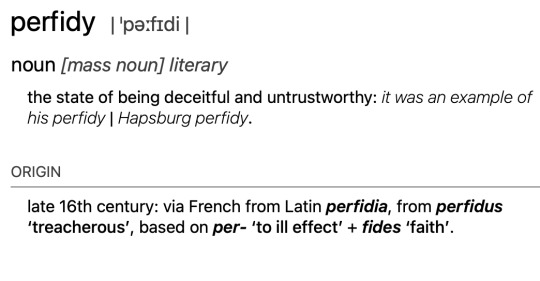
Ever cognizant of its own place in history, the Tribune in one story compared its triumph with the transcripts to “the newspaper’s publication of the Versailles Treaty in 1919 and the Yalta Papers in 1955.”
The pump had been primed for the Tribune’s scoop, with leaks on Nixon’s White House conversations appearing in the months leading up to the release of the tapes.
The more juicy episodes made readers eager to see if the transcript rendered them fact or fiction.
“President Nixon made disparaging remarks about Jews and called Judge J. Sirica a ‘wop,’” The New York Times reported in 1973, attributing those quotations to “sources with direct knowledge of the president’s comments.”
Sirica was presiding over the Watergate burglars’ trial.
“Report Nixon threatened to ‘fix’ Democrats’ lawyer,” an Associated Press headline proclaimed. “I wouldn’t want to be in Edward Bennett Williams’ position after the election,” was attributed to Nixon in the accompanying story.
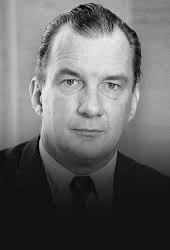
“He referred to the ‘moral attitude’ of some of his Republican critics as if morality was somehow embarrassing,” the Tribune noted Nixon as saying on the tapes.
Such was only the titillating tip of the iceberg.
The full transcript contained more than one smoking gun, and the administration panicked when its existence was revealed in July 1973, when former White House staffer Alexander Butterfield testified before a Senate Select Committee investigating Watergate.
“Mr. Butterfield, are you aware of the instillation of any listening devices in the Oval Office of the president?” he was asked.
“I was aware of listening devices, yes, sir,” he replied, instantly making the investigation more than a disputed debate.
Nixon claimed executive privilege entitled him to the advice of aides who didn’t fear their words coming back to haunt them.
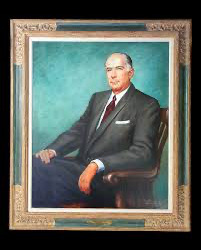
He made Attorney General John Mitchell a sacrificial scapegoat, saying the “Big Tuna,” as he dubbed him, was at fault.
Saying he took full responsibility for the misdeeds of his subordinates, Nixon dramatically accepted the resignations of his top aides, H. R. Halderman and John Erlichman, and Attorney General Richard G. Kleindienst.
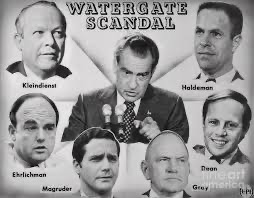
He fired his counsel, John W. Dean, who alerted him to the impending scandal and was entrusted with keeping a lid on it.
“There can be no whitewash at the White House,” Nixon said in a televised appeal to the public.

On what was known as the Saturday Night Massacre, Nixon ordered Attorney General Elliot Richardson to fire the special prosecutor, Archibald Cox. Richardson refused and resigned. Nixon ordered Deputy Attorney General William Ruckelshaus to fire Cox, and Ruckelshaus resigned.
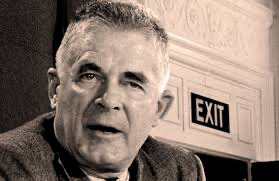
Special Watergate prosecutor Archibald Cox, left, and Philip A. Lacovara, one of his assistants, walk between newsmen in Washington, Sept. 20, 1973, following the meeting in the Executive Office Building with President Nixon's attorneys.
The meeting was held in an effort to settle out of court the battle over presidential tapes related to the Watergate affair.
Nixon appointed another special prosecutor who got a court order in April 1974 requiring Nixon to turn over various documents to a grand jury.
Nixon produced edited versions of some of the recordings.
His lawyer struggled to explain why there were “inaudible and unintelligible gaps.”
An audio expert said an 18½-minute gap resulted from “numerous erasures and rerecordings.”
But by then, the Tribune had published the full-length transcript.
Readers learned that Nixon ordered Dean to spy on the president’s opponents.
”We have not used the (Federal Bureau of Investigation) and we have not used the Justice Department, but things are going to change, and they are going to do it right or go,” Nixon said. “We have been (adjective deleted) fools.”
Readers of those copies of the Tribune trucked to Pittsburgh and flown to Los Angeles read how Nixon took the heat off himself by having one aide persuade another to plead guilty:
“Just start here by (telling) how the president has great affection for you and your family. I was just thinking … last night, poor little kid, lovely wife and all the rest. It just breaks your heart.”
Chicago and the Midwest had been strongholds of Nixon support that faded away in 1974 after Nixon was linked to the Watergate scandal.
The Tribune was the only newspaper in the country to print the entire transcript and then called for Nixon's resignation. (Chicago Tribune)
Chicago and the Midwest had been strongholds of Nixon support, but that faded away in 1974 after President Richard M. Nixon was linked to the Watergate scandal.
The Tribune was the only newspaper in the country to print the entire transcript and then called for Nixon’s resignation. (Chicago Tribune)
Throughout his career, Nixon rebuffed criticism by besmirching critics.
But that wouldn’t work with the Tribune — a solidly Republican newspaper that more than 100 years earlier had stage-managed Abraham Lincoln’s presidential nomination.
The game was up when the Tribune published an editorial headlined: ”Listen, Mr. Nixon.”
“We saw the public man in his first administration and we were impressed,” the Tribune Editorial Board wrote on May 9, 1974. “Now in about 300,000 words we have seen the private man and we are appalled.”
“His country needs a swift and merciful termination of this agony,” the editorial concluded.
On Aug. 9, Nixon resigned. He climbed aboard the presidential helicopter and turned around to face the White House. He smiled gamely, gave a final flash of V for victory, and was gone.

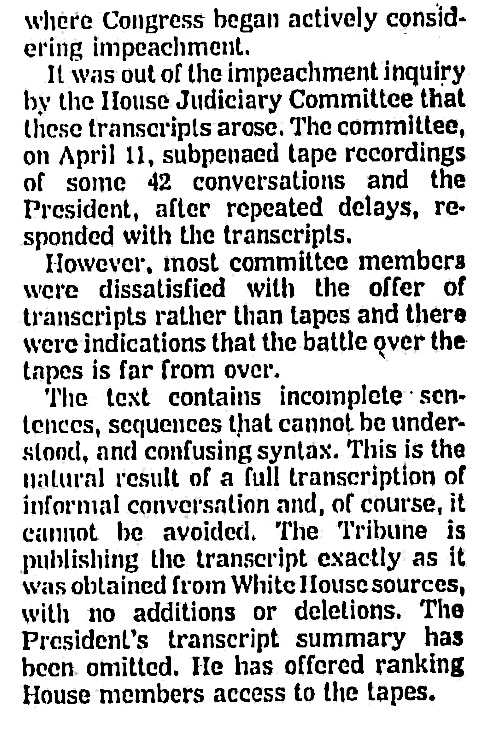
“The text contains incomplete sentences, sequences that cannot be understood, and confusing syntax. This is the natural result of a full transcription of informal conversation and, of course, it cannot be avoided. The Tribune is publishing the transcript exactly as it was obtained from White House sources, with no additions or deletions. The President’s transcript summary has been omitted. He has offered ranking House members access to the tapes."
0 notes
Text
Meduza's The Beet: The fate of the Daugava
Hello, and welcome back to The Beet!
Eilish Hart here, the editor of this weekly newsletter from Meduza covering Central and Eastern Europe, the Caucasus, and Central Asia. Our summer break has flown by and we’re returning to you this week with a very special photo report from Latvia. This story has been in the works since June and I’m thrilled to be able to share it with you, The Beet’s cherished subscribers, days before it hits Meduza’s site. (If you’re not a subscriber, you can become the latest addition to our mailing list here.)
The reporting for this feature took place against the backdrop of the widespread flooding in southern Ukraine earlier this summer, resulting from the destruction of the Kakhovka dam. The available evidence suggests that Russian forces blew up the dam from the inside, unleashing a deluge that President Volodymyr Zelensky decried as “the biggest crime of ecocide, not only during this war, but in decades.”
Some 70 years ago, however, it was the construction of the Kakhovka Hydroelectric Station and reservoir that was wreaking havoc in Ukraine’s south. “One of the most painful consequences for locals was the flooding of the Dnipro wetlands,” recalled environmental historian Anna Olenenko during a panel the University of Toronto hosted back in June. These wetlands, she explained, had been the basis of the regional economy for generations, as well as a symbol of Ukrainian cultural heritage known as the Great Meadow (Velykyi Luh). But according to Olenenko’s archival research, the Soviet authorities ignored expert recommendations aimed at protecting this ecosystem and instead opted to radically reshape it, building a reservoir so large that it drowned the historic wetlands in a “man-made sea.” Some 37,000 people were forcibly resettled.
A few years later, Moscow set out to build a new cascade of hydroelectric power stations, this time in Soviet-occupied Latvia. But popular opposition to the looming loss of natural monuments along the Daugava River proved to be a stumbling block that grew increasingly insurmountable as the decades-long project marched on. For The Beet, Meduza photo editor Katya Balaban recounts how the fight to save the Daugava River’s natural riches kick-started Latvia’s independence movement. I hope you find her photo report, which has been expertly translated by Meduza senior news editor Sam Breazeale, as captivating as I did.
The fate of the Daugava
How the fight to save a river gave rise to Latvia’s independence movement
By Katya Balaban
Every day in September 1974, Ādolfs Riekstiņš went to the bank of the Daugava River and watched as the massive pit that would soon become the Riga Hydroelectric Power Plant reservoir filled with water. Last to disappear were the remnants of the mill that his grandfather had built.
Ten years had passed since Riekstiņš’s family and nearly 200 others had learned that the Soviet authorities were planning to flood the land they had lived on for generations. “That was the first time I saw my dad cry,” Ādolfs’s daughter, Rudīte Ķikuste, recalled. “He and my grandfather had planted so many trees on the island. And now he was being ordered to chop them all down himself.”

A map of the reservoir near the Riga HPP and Dole Island that shows the flooded areas on the island and along the riverbank
The Riekstiņš family had lived on Dole Island since 1740. Rudīte lived there for 18 years — almost up until the day it was flooded. She told The Beet that she learned to swim before she learned to read. For centuries, life on the island had been inseparable from the river.
Every family on Dole Island had their own boats. Practically everybody fished, and many of the island’s residents mined dolomite from the river’s bed and banks. With no spring frosts on the island, conditions were ideal for agriculture. Islanders grew early potatoes and cabbage, wheat, rye, apples, and even grapes. Fish, vegetables, and stone were sent to the capital, Riga. Most households on the island were relatively wealthy; Rudīte’s grandfather, for example, had a mill, a smithy, a cattle yard, and several cargo boats.
“Everybody knew one another, and when you left home, you never locked your door,” Rudīte said. With a population of about 500, the island had a school, a library, a church, shops, a fire brigade (with its very own Ford), and even an orchestra; Rudīte’s father played the trumpet.
While the Riekstiņš family’s home disappeared underwater in 1974, it wasn’t the first time they had been forced to leave Dole Island. Decades earlier, during the mass deportations of 1941 and 1949, the Soviet authorities sent almost half of the island’s inhabitants to Siberia. “They expelled everyone who had anything at all,” Rudīte said. “My father gave his grandfather’s mill to the authorities to protect the family from repressions, but he ended up on their lists anyways.” Ultimately, the family managed to avoid deportation in 1949 thanks to one “conscientious Soviet officer” who advised them “not to be at home today.”
After Joseph Stalin’s death and the start of Nikita Khrushchev’s Thaw, the Riekstiņš family returned to Dole Island. They found their home occupied, but they managed to buy it back, and Ādolfs began working at the mill that had once belonged to his father. Twenty years later, they were forced to leave Dole Island again, when half of its territory was flooded.
The cascade
Engineers first proposed using the Daugava River to generate electricity in the 1920s, during Latvia’s interwar period of independence. According to historian Mārtiņš Mintaurs, an associate professor at the University of Latvia, the original plan was to construct a cascade of seven power stations between the town of Jekabpils and Riga, as well as to build passageways for fish and to develop the river for boat traffic. The reservoirs would remain within the main river bed, and the water level rise was projected to be minimal. By the end of the 1930s, however, only one station had been built: the Ķegums Hydroelectric Power Station.
In the aftermath of World War II, during which Latvia came under Soviet occupation, the USSR’s Hydroproject Institute took over the project. The new, Moscow-designed plans included neither boat traffic nor fish passes, and instead of six more small stations, the authorities decided to build three large ones, each with a massive reservoir. The first new station, the Pļaviņas Hydroelectric Power Station, began operating in 1965; the Riga Hydroelectric Power Plant was built in 1974, and construction of a plant near the city of Daugavpils began in 1979.
The stations’ construction had a significant impact on the Daugava’s ecosystem. One of the biggest consequences was that the new dams disrupted the migrations of fish. “Initially, there was a plan to build a fish pass in the Riga HPP, but somebody came up with a so-called cost-cutting measure, and the fish pass was never built,” Mintaurs told The Beet. The power station presented an insurmountable obstacle for fish populations traveling back and forth from the Baltic Sea to spawn in the upper reaches of the river. Essentially, the entire Daugava, as well as the rivers and lakes connected to it that cover more than 60 percent of Latvia’s territory, was cut off.
But the Riga and Pļaviņas HPPs didn’t just impact the local ecosystem; they also altered the landscape itself. Artificial riverbanks built along the shores of the Riga reservoir brought the water level up to about 10 meters (33 feet) above ground level. The reservoir spread over an area of 35 square kilometers (13.5 square miles). Dole Island, the largest island on the Daugava River, lost more than half of its territory, while the nearby islands of Martiņsala and Nulpe were fully submerged.
Residents who witnessed the Riga HPP’s construction said the territory of the future reservoir gradually started to resemble a “Martian landscape” or a “desert.” After the homes on Dole Island were demolished and the trees chopped down, bulldozers began to dig the pit, removing the top layer of soil from the part of Dole Island that was slated to be flooded. Construction work continued around the clock.
Vilnis Roze was born on the island and lived there until he was 20 years old. The future reservoir’s territory began behind his family’s garden. He saw with his own eyes how everything in the area was cut down, removed, and dug up; in his words, the process was “barbaric" and the residents “weren’t asked about anything.”
Bulldozers regularly encroached on the Roze family’s garden, Vilnis told The Beet. “They were massive — they looked like tanks,” he recalled. “I was 14 or 15 years old, and one time, late at night, when this vehicle came into our garden yet again, I climbed into its tracks to stop it from running over our apple trees.” The Roze family had lived on the island since the early 1700s. The house where Vilnis grew up and the garden he was determined to defend are still on the island today. His brother lives there now.
‘A silent protest’
“I descended into the water; the visibility was very poor. In the dark, murky water, I saw the outline of a stone stage and benches for spectators. I joked to myself: if only we could organize an underwater concert,” recounted underwater archeologist Voldemārs Rains. In the 1990s, he and his colleagues made multiple dives to find out what had become of Staburags (or Staburadze), a natural monument that was once one of Latvia’s best-known cultural symbols.
Staburags was an 18.5-meter (61-foot) limestone cliff that appeared to “cry” from its numerous springs and that formed over the course of 10,000 years. It resembled the head of a bearded giant and was especially beautiful in the winter, when its white lime-rich springs would freeze. The site had inspired numerous legends over the centuries and Latvians traveled from all over the country to see it. Located next to it was Vīgante Park, which included a large platform and rows of benches. This was the stage that Rains saw while exploring the site three decades after it was submerged.
The construction of the Pļaviņas Hydroelectric Power Station in the 1960s entailed the flooding of other famous Latvian sites as well, including the Koknese Castle, which was built in the 13th century, as well as the nearby Pērse waterfall and the Oliņkalns Hill, which was the only training base for mountain climbers in Latvia and had the ruins of an ancient settlement on its summit.
During both the planning and construction stages of the Pļaviņas HPP, the prospect of losing these sites was painful for Latvia’s population and even led to open protests — something unthinkable during that era of Soviet rule.
Letters to the Soviet authorities opposing the construction of the Pļaviņas HPP were signed by biologists, archeologists, historians, mountain climbers, writers, journalists, artists, museum employees, and factory workers. “This project was developed by specialists who don’t know enough about the economic and cultural aspects of our republic [...] These sites, which belong exclusively to us, are part of our national character,” reads a 1958 letter from workers at Riga’s Popov Radio Factory to the Latvian Communist Party leadership. The public backlash delayed the construction of the Pļaviņas HPP by nearly five years, but the protests petered out after the Latvian Communist Party’s leadership was replaced in 1959. Construction began on the Pļaviņas HPP in 1961.
When it became clear that Staburags’s flooding was inevitable, people from all over the country began making pilgrimages to the site in what historian Mārtiņš Mintaurs called a “silent protest.” Archeologist Juris Urtāns visited the area several times during his childhood, before it was submerged. “People hiked along the Daugava, slept next to the river, and went out on rafts to preserve it in their memories however they could,” he recalled. Artists did their best to capture the cliff and the surrounding landscape that would soon be lost. Displaying a picture of Staburags became tantamount to flying Latvia’s traditional red-and-white flag, which was banned until 1988.
The only “compensation” for these losses that Latvia’s intelligentsia managed to attain were the large-scale archeological surveys carried out on the territory of the future reservoirs. “Everyone understood that we would lose a lot of cultural artifacts. The archaeological expeditions became rescue operations,” said Urtāns. During his childhood and adolescence, he had spent every summer performing excavations with his father, Vladislavs Urtāns, who took part in surveys during the construction of the Pļaviņas HPP and, later, the Riga HPP. “There had never been such large-scale excavations in Latvia and there haven’t been since, because they require an enormous amount of money,” Urtāns told The Beet. “Yes, we lost quite a lot on the Daugava River, but we also learned a lot.”
While the archaeologists increased the scope of their survey with every year of the hydroelectric plant’s construction, Urtāns estimates that they only managed to examine about 15 percent of Latvia’s archaeological cultural heritage in the flood zone of the Riga HPP reservoir, and even less in that of the Pļaviņas HPP.

A map of the Pļaviņas HPP reservoir and the natural and historic sites that were flooded due to its construction
‘The start of our revolution’
“This summer, at one of the most beautiful spots on the Daugava, the hamlet of Slutiški, one could observe unusual funeral processions. Excavators, bulldozers, and cars carrying human remains would travel the same path several times a day,” begins an article published in the newspaper Literatūra un Māksla (“Literature and Art”) on October 17, 1986.
By that point, the construction of the fourth station in the Daugava cascade, the Daugavpils HPP, had been ongoing for eight years. After moving a cemetery, multiple dacha communities, and an entire forest, the Soviet authorities had built access roads and temporary housing for hydraulic engineers, as well as a basin for the future reservoir and an embankment designed to serve as the dam. They planned to open the new station in 1990, but halted construction in 1987 — in no small part due to the article in Literatūra un Māksla.
In the article, titled “Thinking about the fate of the Daugava,” journalist Dainis Īvāns and water engineer Artur Snips called into question the benefit of the Daugavpils HPP and wrote about the damage it could do to Latvia’s economy, environment, and cultural heritage. The authors also criticized the technical and economic aspects of the project: Snips, who had previously worked at the Ķegums HPP, had managed to obtain the planning documents for the Daugavpils station.
Īvāns had spent the summer of 1986 staying with family in the Upper Daugava valley. “It had the most beautiful sites. Then suddenly I see these strange pegs hammered into the field. I started asking around, and it turned out that they were markers for the borders of the flood area,” he told The Beet. “I knew I had to do something.”
Īvāns and Snips’s article served as a trigger. “The day after the article’s publication, my apartment turned into the headquarters of the resistance,” Īvāns said. People began writing letters opposing the construction of the Daugavpils HPP; before long, 30,000 people had signed petitions against the station’s construction. A council of scientists convened several times at the Latvian Academy of Sciences to discuss the facility’s possible ramifications.
Members of the Belarusian intelligentsia got involved, as well. The water level in the Daugavpils reservoir was projected to rise by 20 meters (65 feet), which threatened to cause floods not only in Latvia but also in neighboring Belarus. The planned reservoir, stretching 200 kilometers (124 miles) wide, would have reached all the way to the city Navapolatsk.“Then an Eastern Europe-wide movement began. Estonians, Lithuanians, Slovakians, and Hungarians began coming to me to ‘learn from our experience,’” said Īvāns.
Two months after the article came out, the authorities tried to stop the protest wave by banning not only publications about the construction of the Daugavpils HPP but also any mention of the word “Daugava” itself. “It reached the point of absurdity. The June 17 Plant was ordered to stop producing a line of waffles that had a blue wrapper with the word ‘Daugava’ printed on it,” Īvāns recalled. In December 1987, the National History Museum of Latvia organized a photo exhibit on the Daugava River and Staburags. The Soviet leadership in Moscow ordered for the exhibit to be closed on the same day it opened.
To circumvent the censorship, musicians started singing about the river during concerts. “The word ‘Daugava’ became like a password,” Īvāns recalled. In May 1987, students from both Latvian and Belarusian universities traveled down the Daugava in boats with signs in support of preserving the river. Their route ended at the future site of the Daugavpils HPP, where they planned to hold a protest. “Fishermen” in gray suits stood all along the riverbank throughout their journey, and at the end they were met by the KGB chief and police officers. In response, the students sailed to the other side of the river and held their protest there.
By then, an unstoppable process had been set in motion. “Standing up for the Daugava meant the same thing as standing up for an independent Latvia. Many people know that the fight against the Daugavpils HPP was the start of our revolution,” Īvāns explained. “In defending the Daugava, people came to the realization that it was possible to stand up against the Soviet authorities.”
In the summer of 1987, the Soviet Academy of Sciences in Riga hosted a conference on environmental issues; the experts in attendance reached the conclusion that the construction of the Daugavpils HPP would be unacceptable on both environmental and economic grounds. On November 5, 1987, the Soviet Union’s Council of Ministers decided to stop the construction of the hydroelectric power plant near Daugavpils.
Less than four years later, in August 1991, Latvia declared independence from the Soviet Union.
1 note
·
View note
Photo

(Voids | Old Fireから)
Voids by Old Fire
On Voids, composer and producer John Mark Lapham turns his recording project Old Fire into a sprawling mural illustrating the isolation and decay that defined growing up in West Texas, and the losses and frictions he has endured amid such a bleak backdrop. A largely collaborative album, Voids employs the talents of featured vocalists Bill Callahan, Emily Cross, Adam Torres, and Julia Holter, along with a myriad of musicians, across half of the 12 genre-fluid, yet impressively cohesive tracks. Combined with the additional instrumental songs, the album spans baroque dream-pop, filmic ambient, raga-like drones, avant-country, and even spiritual jazz—all imbued with poetic heft and seared by the West Texas sun. It was beneath this same sun that, over the past five years, Lapham lost both of his parents, mourned two withering relationships, and shouldered the fallout of the pandemic, before turning his life experiences into the rusted-out scraps that built Voids from the ground up.
In the age of remote collaboration, features can easily feel glued-on; the disparities in recording locales, artistic visions, and sensibilities sometimes compound inside each psychoacoustic detail to the point of disproportion. Voids makes clear, however, that one of Lapham’s many talents is selecting contributors whose timbres and temperaments soak effortlessly into every atom of his sonic sculptures. “I usually send a collaborator a piece of music with some general ideas of what I'm looking for, and let them develop it as they see fit. I give them some preliminary lyrics I've written, or at least some themes of what the song is about, then they write lyrics and ideas based around that,” he explains. “Sometimes there is a lot of back and forth before we get it right, and almost always there are unexpected turns in the process where it ends up being something very different from what we started with. I bring it all together, but the album exists because of their contributions.”
Lapham’s music and visual art—he doubles as a video editor and animator, and has made music videos for bands such as Goat, Throwing Muses, Night Beats, Moon Duo, Jane Weaver, and many others—are stitched with threads spun from the dissonance between his identity and the doggedly conservative cultural atmosphere in which he was raised, ventured away from by adulthood, and ultimately returned to in 2013. As evidenced by the alternating apprehension and expansion on Voids, Lapham wields his creativity as a covert weapon against his once and future surroundings as if the act of creating something, anything, is in itself defiant of the cultural, structural, and even climatic deterioration of many West Texas towns. Across the album, and through the concept of Old Fire as a project, he builds a mythical, noir-ish version of his home state and its wide open spaces, painting these fictional narratives with the music.
There is no better narrator for Lapham’s story than fellow Texas resident Bill Callahan, whose iconic delivery personifies the core themes of Voids. By the time Callahan appears, he does so over a saw-blade drone that sounds like machinery echoing off corrugated steel walls and out into infinity. “In June, the red rose blooms, that’s not the flower for me,” Callahan intones on the album’s reinterpretation of the traditional song “When I Was In My Prime,” before the hum breaks open into a loose, yet pained confluence of violin and upright bass that recalls Joe Henderson’s 1974 spiritual jazz album, The Elements. Like many on the album, the track dovetails seamlessly into the next, “Corpus,” as Callahan resumes with a baritone recitation of an oblique yet vivid mantra: “Hey Mack, can you bring that boat back?”
The instrumental “Love is Only Dreaming” resolves in a deluge of organic textures that climb over one another until they are abruptly cauterized by the album’s centerpiece, “Dreamless.” Two sides of the same coin, “Love is Only Dreaming” was born out of parts of “Dreamless” (many Old Fire songs begin this way), expanding on its textures, and together creating a small world. Voids crystallizes into its most straight-ahead moment on “Dreamless,” a song born spontaneously from some improvised guitar recordings from Alex Hutchins, cut and sequenced by Lapham into a brilliant piece of pop songwriting. Featured vocalist Adam Torres soars to anthemic and gently psychedelic consequence over Lapham’s punctual arrangement of stomping drums and rapturous string-work.
The somber “Don’t You Go,” a John Martyn cover and the final joint effort with Callahan, features an elegant and evocative piano part, arranged and performed by Thomas Bartlett, and haunting cello by Semay Wu. Icy and glistening, “Window Without a World” stands as Voids’ most unconventional collaboration, as it began with a sample Lapham took from Julia Holter’s song, “World.” Unable to sort the timing to work together directly, he eventually lifted the musical backing from “Don’t You Go,” rearranged the samples, and then added transposed woodwind parts from the instrumental closer “Void IV: Circles” to create the stirring song. Combined with Cross’ beautiful, beguiling “Blue Star,” these initial six songs share a strong link, like different chapters of the same book.
The instrumental latter half of Voids stands in equal stature to the album’s vocal moments. In fact, it’s even heightened by a poignant absence of voices after such a compelling round of hosts. Tracks like “Void I: Uninvited” hover and shift like clouds in the Texas sky; steel guitar by Bob Hoffnar, and other soft sirens like clarinet by Thor Harris, guitar textures by ambient composer Wayne Robert Thomas, and saxophone by Joseph Shabason—all of who appear at times across the album—slip in and out of existence. In this subtler quarter of the album, the listener is walked through a calm and tragic valley indicative of the author’s life while making Voids. “I was feeling the brunt of a relationship ending, and the emptiness it left behind,” says Lapham. “Over the course of compiling the album, I lost both my parents, and the pandemic started. These recordings were born out of that loss, and that isolation. The title Voids was a natural fit.”
The album concludes with the pleasant clatter of “Void IV: Circles,” wherein Lapham throws all his ingredients into a pot of celebratory catharsis. Drum sets collide with one another gleefully, and harmonized textures scatter and roll about the floor like ornate marbles. Lapham’s collage-work, which up to this point has been smartly restrained, comes unglued as he transmutes grief into relief within a moment-of-death montage of aural imagery.
Across Voids, that same awareness of tragedy and loneliness is made palatable by the album’s exciting and varied topography, which stands insubordinately against Lapham’s real-life surroundings. The settlers who established West Texas towns like the one he calls home, Abilene, must have done so with a sense of hope despite the hostility of their surroundings, however inevitable the withering. Similar spirits speak through Lapham’s work, and he welcomes them as fascinating old friends. “That more than anything inspired a lot of what I try to express through Old Fire—faded memories, former glories, places lost in time,” he discloses. “Whatever I was trying to express wasn't finished with the first album, like a story that was only half-read. It seemed like that was only the beginning, and there was a lot more ground to cover.” If there is ground still uncovered for Old Fire after Voids, it's sure to be lush in spite of—or perhaps because of—the dusty soil beneath it. クレジット2022年11月4日リリース
ALL GONE
PIANO AND HAMMOND ORGAN: CHRISTIAN MADDEN
SAXOPHONE: JOSEPH SHABASON
CLARINET: THOR HARRIS
TRUMPET AND FLUGELHORN: MATT BURKE
FRENCH HORN: RICHARD RIDE
VOCAL TEXTURES: EMILY CROSS
ADDITIONAL ELECTRONICS: ALEX HUTCHINS
SAMPLES AND ELECTRONICS: JOHN-MARK LAPHAM
BLUE STAR
VOCALS: EMILY CROSS
ELECTRIC GUITAR AND ELECTRONICS: ALEX HUTCHINS
PIANO AND HAMMON ORGAN: CHRISTIAN MADDEN
DOUBLE BASS: CHRIS SIMPSON
DRUMS: JOE RYAN
SAXOPHONE: JOSEPH SHABASON
CLARINET: THOR HARRIS
TRUMPET AND FLUGELHORN: MATT BURKE
SAMPLES AND KEYBOARDS: JOHN-MARK LAPHAM
WHEN I WAS IN MY PRIME
VOCALS: BILL CALLAHAN
“HURRY GURTY” AND ELECTRIC VIOLIN: THOR HARRIS
ELECTRIC GUITAR: ALEX HUTCHINS
STEEL GUITAR: BLAKE SIMS
DRUMS: JOE RYAN AND ROBB KIDD
SAMPLES AND ELECTRONICS: JOHN-MARK LAPHAM
CORPUS
VOCALS: BILL CALLAHAN
HAMMON ORGAN AND RHODES: CHRISTIAN MADDEN
MELLOPHONE AND CLARINET: THOR HARRIS
ELECTRIC GUITAR: ALEX HUTCHINS
DOUBLE BASS: CHRIS SIMPSON
SEEL GUITAR: BLAKE SIMS
CELLO: SEMAY WU
DRUMS: JOE RYAN AND ROBB KIDD
SAMPLES AND KEYBOARDS: JOHN-MARK LAPHAM
LOVE IS ONLY DREAMING
TREATED GUITAR: ROBIN ALLENDER
ELECTRIC GUITAR: ALEX HUTCHINS
CELLO: SEMAY WU
KEYBOARDS: JOHN-MARK LAPHAM
DREAMLESS
VOCALS: ADAM TORRES
RHODES AND KEYBOARDS: CHRISTIAN MADDEN
ELECTRIC/ACOUSTIC GUITAR AND BASS: ALEX HUTCHINS
CELLO: SEMAY WU
DRUMS: JOE RYAN
SAMPLES AND KEYBOARDS: JOHN-MARK LAPHAM
DON’T YOU GO
VOCALS: BILL CALLAHAN
PIANO: THOMAS BARTLETT
CELLO: SEMAY WU
KEYBOARDS AND GUITAR FX: ROBIN ALLENDER
SAMPLES: JOHN-MARK LAPHAM
WINDOW WITH A WORLD
VOCAL SAMPLE: JULIA HOLTER
ELECTRIC GUITAR AND LOOPS: ROBIN ALLENDER
VOCODER: CHRISTIAN MADDEN
HARP: AUDREY HARRER
CHOIR VOCALS: DAVID STITH
XYLOPHONE: THOR HARRIS
SAXOPHONE: JOSEPH SHABASON
DRUMS: JOE RYAN
SAMPLES AND WOODWIND PROGRAMMING: JOHN-MARK LAPHAM
VOID I: UNINVITED
STEEL GUITAR: BOB HOFFNAR
TREATED GUITAR: WAYNE ROBERT THOMAS
SAXOPHONE: JOSEPH SHABASON
CLARINET: THOR HARRIS
SAMPLES: JOHN-MARK LAPHAM
VOID II: MEMORY
STEEL GUITAR: BOB HOFFNAR
TREATED GUITAR: WAYNE ROBERT THOMAS
SAXOPHONE: JOSEPH SHABASON
CLARINET AND PERCUSSION: THOR HARRIS
KEYBOARDS AND SAMPLES: JOHN-MARK LAPHAM
VOID II: FATHER AS A BOY
STEEL GUITAR: BOB HOFFNAR
CELLO: SEMAY WU
HARP: AUDREY HARRER
TREATED GUITAR: WARREN DEFEVER
SAMPLES: JOHN-MARK LAPHAM
VOID IV: CIRCLES
SAXOPHONE: JOSEPH SHABASON
CLARINET AND MELLOPHONE: THOR HARRIS
STEEL GUITAR: BOB HOFFNAR
BASS: ROBIN ALLENDER
HARP: AUDREY HARRER
DRUMS: ROBB KIDD
SAMPLES, WOODWIND PROGRAMMING, AND ELECTRONICS: JOHN-MARK LAPHAM
PRODUCED AND PROGRAMED BY JOHN-MARK LAPHAM
MIXED AND MASTERED BY ERIK WOFFORD
0 notes
Photo
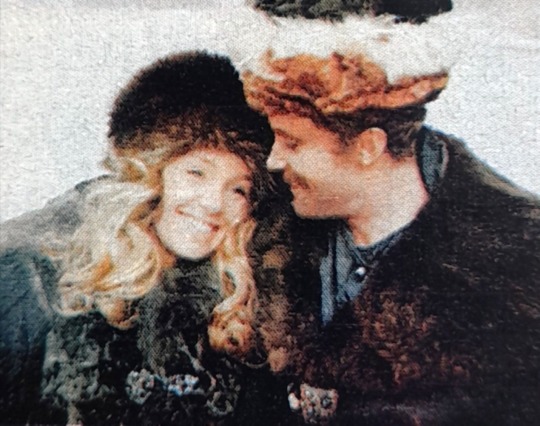
A Polish press photograph from the end of the 20th century can sometimes make quite an interesting artistic impression...
Oleńka Billewiczówna and Andrzej Kmicic in the “Deluge” (1974)
#potop#deluge#andrzej kmicic#oleńka billewiczówna#trylogia#henryk sienkiewicz#jerzy hoffman#polish literature#polish movies#polish press#trylogiarchive#trylogia sensem życia
33 notes
·
View notes
Text
After the Deluge
After the Deluge @Jacksonbrowne @brownrandy #americanamusic #newmusic2022 #buymusic #beforethedeluge #afterthedeluge
“Let the music keep our spirits high
Let the buildings keep our children dry
Let creation reveal its secrets by and by, by and by
When the light that’s lost within us reaches the sky”
Before the Deluge, Jackson Browne
Before the Deluge is a song from Jackson Browne’s third album, Late for the Sky. Released on Asylum Records, September 13, 1974. It reached number 14 on the Billboard Pop Album…
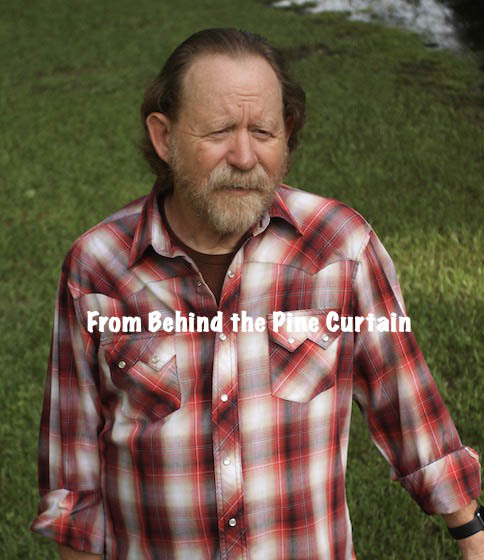
View On WordPress
0 notes
Text
erm im late thanks for tagging me @habblive i guess
NOT tagging anyone else cuz everyone i know already did it
favourite colour: GREEN all the green shades, earthy colours overall, some nice rich purples and one specific shade of pink idk the name of
currently reading: nothing books are for losers (internet fanfiction)
last song i listened to: Buddy Holly x Jobless Monday youtube mash-up, don't ask, but a normal one would be Golden Brown - The Stranglers
last series i watched: the Harley Quinn animated show, it was entertaining
last movie i watched: Potop part II (1974), based on the historical novel "Potop" written by Henryk Sienkiewicz, it's based on the Swedish Deluge, watched that instead of reading the actual book for school
cravings: blowing up planet earth with a gigantic space ray and also pancakes with chocolate sauce
currently working on: nothing, not in a creative mood since April, unless trying to pass in school counts
1 note
·
View note
Photo
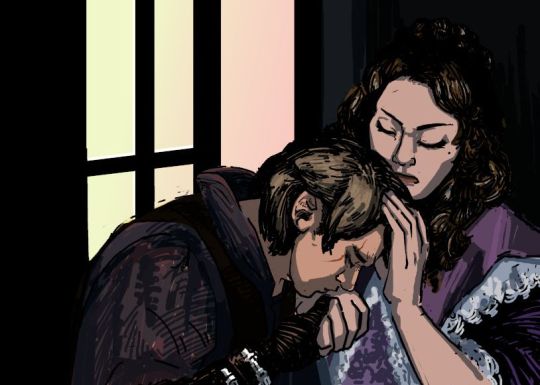
This work is a screenshot redraw from a 1974 movie called “The Deluge”(Potop), the movie is an adaptation of “The Deluge”(Potop) novel by Henryk Sienkiewicz.
Why I drew that is under the cut/read more, if you’re interested...
Andrzej Kmicic and Aleksandra Billewiczówna’s relationship is very similar to what Anakin and Padme has in The Clone Wars cartoon, with Andrzej being a hot-headed mess, who has the best of intentions but poor judgment and even worse moral compass while Aleksandra, Andrzej’s fiancee (their marriage was arranged by their guardians), is a very patriotic, level-headed young woman who happened to fall head over heels for her impulsive future husband, but she couldn’t just be in a relationship with a "ruffian” such as Andrzej thus she rejected him (and by extend choosing a life of a nun). Brokenhearted Andrzej threw himself into a life of servitude for his motherland, hoping that his good deeds might clear his tarnished name but also, by extend, make Aleksandra change her mind about him.
Not to mention there is a whole plethora of interesting characters, for example Michał Wołodyjowski, lovingly called “Little Knight” due to his smaller stature, who is like... Obi-Wan Kenobi of The Trilogy (a trilogy of novels by. H. Sienkiewicz, The Deluge is a part of), by not only being very patriotic and wise soldier but also a great military tactician, excellent swordsman and a very important figure in Andrzej’s redemption.
The Deluge is a very interesting book. A very long novel split into three parts! Some of you might find it dated - It was written in XIX century after all. Some of you might find it quite alien as it is basically a mixture of Polish patriotism, action, adventure and romance, where the most of the main cast is semi-fictional but thrown into an actual historical events with actual historical figures.
---
Special thanks goes to @kalm5 who survived my insane ramblings about how Andrzej Kmicic is basically “a what if... TCW!Anakin was a XVII century Polish nobleman... because the resemblance is UNCANNY like... destroying a village in act of revenge... war crimes... and... and STUFF!” and then how “kontusz is like super nice and would look great on anyone - let me send you this random out-of-focus photo I made of this random person wearing black-and-red kontusz because that’s totally Clone Force 99′s look if they were XVII century Polish nobility, because... like! you’ll see-!”.
===
The Deluge/Potop (novel) © Henryk Sienkiewicz
The Deluge/Potop (movie) © Jerzy Hoffman
STAR WARS: The Clone Wars/The Bad Batch © George Lucas/ Dave Filoni/ LucasFilm/ Disney
---
EDIT: some rewording was required, fixed spelling in few places, edited tags.
#anidala#Anakin Skywalker#Padme Amidala#star wars#star wars the clone wars#andrzej kmicic#oleńka#olenka#potop#the deluge#screenshot redraw#aleksandra billewiczowna#Fanart#star wars the slav wars#the clone deluge
94 notes
·
View notes